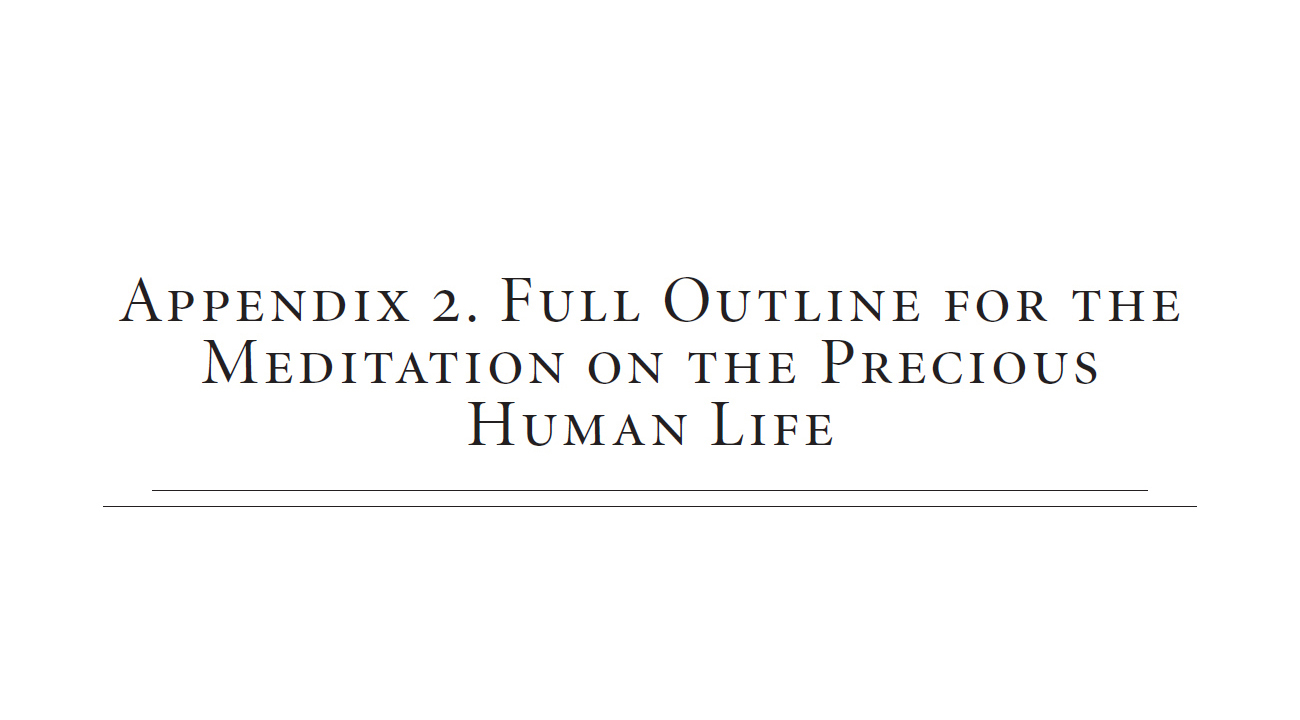
THE EIGHT FREEDOMS
Our present life is free from eight types of rebirth that would greatly hinder our ability to learn Dharma teachings, contemplate their meaning, and meditate on them. We are free from four nonhuman states, being born as a:
-
hell being
-
hungry ghost (preta)
-
animal
-
long-lived god
We are free from four human states, being born:
-
as a barbarian, among uncivilized savages, or in a country where religion is outlawed
-
where the Buddha’s teachings are unavailable—i.e., in a world where the Buddha has not appeared
-
having physical or mental challenges that impede one’s being able to learn and contemplate the Dharma
-
holding deeply entrenched distorted views
THE TEN FORTUNES
Our present life is also endowed with ten excellent factors which are conducive to being able to learn, practice, and realize the Buddha’s teachings.
It is endowed with five personal factors:
-
birth as a human being
-
birth in a central Buddhist region (Geographically, this refers to our world; spiritually, it is where the fourfold Buddhist community exists—fully ordained male and female monastics and male and female lay followers who have taken refuge and precepts.)
-
having complete sense faculties, sound mental faculties, normal sex organs (not being a hermaphrodite or someone without sex organs)
-
not having committed the five heinous actions (killing one’s father, mother, or an arhat; drawing blood from a Buddha; and causing a schism in the monastic sangha)
-
having instinctive belief in things worthy of respect such as the Three Jewels, ethical conduct, and so forth
It is endowed with five factors that come from society:
-
being born where and when a Buddha has appeared
-
being born where and when a Buddha has taught the Dharma
-
living where and when the Buddhadharma still exists (The scriptural Dharma exists where the Three Baskets of Buddha’s teachings are propagated. The realized Dharma exists where people have the realizations gained from practice.)
-
living where and when there is a monastic sangha community following the Buddha’s teachings
-
living where and when there are others with loving concern—Dharma teachers and benefactors—so that we have the external supports for practice